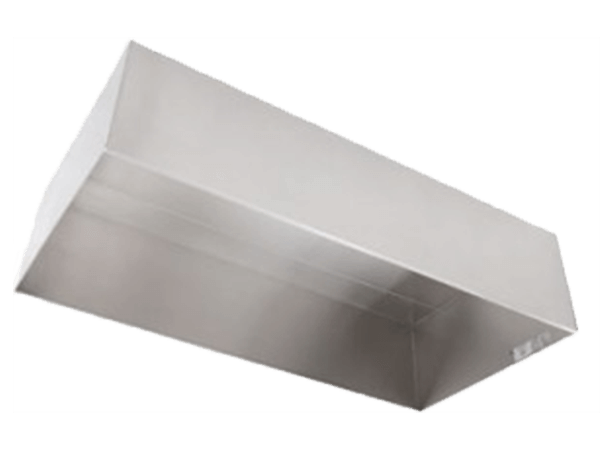Safeguard your facility from a fiery disaster with hood services by SLM Facility Solutions Nationwide.
With over 1 million restaurants in the continental United States and one of the main causes of restaurant fires is failure to clean equipment. Without correct kitchen exhaust cleaning, grease in time builds up and cakes the interior of the hood. Then carbon or even fire from your grill or stove can spark and ignite a fire which can swiftly obliterate entire kitchens and buildings. The devastation to your property, bottom line, and potentially people is overwhelming. Don’t become another statistic by having the proper programs and service providers in place.
Put SLM Facility Solutions Nationwide’s 20+ years of expertise with commercial restaurants to work for you. We only work with suppliers certified for kitchen hood exhaust and exhaust fan cleaning based on NFPA 96-11-4 standards. along with the proper insurance requirements. It’s our attention to detail, before and after photos, follow up and follow through 24/7 that gives our clients peace of mind.
Ensuring the safety of your restaurant starts with regular kitchen exhaust and hood cleaning. Accumulation of grease in the exhaust hood can be a significant fire hazard, potentially leading to severe property damage and risks to personnel. Professional hood cleaning services help in preventing such dangerous scenarios.


SLM’s Kitchen Exhaust & HOODS Service Include:
Types of HOODs SLM Facility Services
- Type I – designed to remove cooking-related heat, odors, smoke, grease, and other cooking residues that becomes airborne – requires a fire suppression system
- Type II – often called condensate hood – designed to collect fumes, odors and steam.
Why is SLM Facility Solutions Unique?
- Sustainability Consulting
- Improving business efficiencies
- Audits of all waste streams including volume, types, competitive rates
- Strategy based on data & Collaboration.
- Data Sharing – greater collaboration and overall better decisions
What you Can Expect with Hood Services from SLM Facility
- Pre-cleaning inspection
- Inspection of fans for proper operation and code compliance
- Filter Removal; re-testing fan condition
- If grease spatters onto the roof – clean up
- Plastic Protection of Kitchen Servicing Area and Roof
- Scraping of Kitchen Exhaust System to rid any high-density carbon build up
- Food-Safe Chemicals sprayed onto all parts of exhaust unit
- Power Washing of Hood, Vents, Ducts, Fans and Filters
- Clean up of Kitchen and Roof – post inspection
- Certificate of cleaning posted on the hood
Frequently asked questions about kitchen exhausts and hood cleaning
Why is regular cleaning of kitchen exhaust hoods crucial for fire safety?
Regular cleaning prevents grease buildup, which is a significant fire hazard in commercial kitchens. Removing grease reduces the risk of fire, ensuring a safer environment for staff and customers.
How can I tell if my kitchen exhaust system needs cleaning?
Indicators that your exhaust system needs cleaning include visible grease buildup, unpleasant odors, reduced airflow, and grease dripping from the hood. Regular inspections can help detect these signs early.
What are the benefits of professional kitchen hood cleaning services?
Professional cleaning ensures thorough removal of grease and grime, compliance with health and safety regulations, improved air quality, and reduced fire risks. It also extends the lifespan of your kitchen equipment.
What are Type I and Type II hoods, and how do they differ?
Type I hoods are designed to eliminate heat, smoke, grease, and airborne particles from cooking, and typically require a fire suppression system. Type II hoods are used to capture steam, fumes, and odors, often found in non-grease producing cooking environments.
What are some common problems with kitchen exhaust systems and how can they be prevented?
Common problems include grease buildup, blocked ductwork, and malfunctioning fans. Preventive maintenance, regular cleaning, and timely repairs can help avoid these issues.
How does SLM Facility Solutions ensure compliance with NFPA 96 standards?
SLM Facility Solutions partners with suppliers who meet NFPA 96 standards, conducts regular inspections, and uses certified technicians to perform thorough cleaning and maintenance of exhaust systems.
What steps are involved in a professional kitchen exhaust system cleaning?
The cleaning process includes a pre-cleaning inspection, filter removal, cleaning and scraping of the exhaust system, power washing of all components, and a final inspection with certification.
How can businesses schedule emergency cleaning services for kitchen exhaust systems?
Businesses can contact SLM Facility Solutions 24/7 for emergency cleaning services. Prompt response helps address urgent issues and minimize downtime.
What maintenance practices can kitchen staff implement to support the longevity of exhaust systems?
Staff can regularly clean filters, wipe down exterior surfaces, monitor for signs of grease buildup, and report any unusual noises or smells to maintenance providers for timely intervention.
What documentation is provided after a professional kitchen exhaust cleaning?
After cleaning, SLM Facility Solutions provides detailed before and after photos, a certificate of cleaning posted on the hood, and any necessary reports to ensure transparency and compliance with regulations.